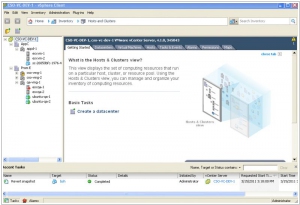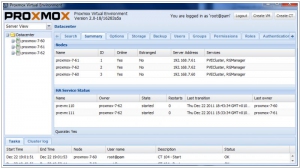Proxmox vs VMware vSphere
June 12, 2023 | Author: Michael Stromann
16

Build your own cloud infrastructure in your datacenter and remote sites on VMware vSphere the world’s leading server virtualization platform. Virtualize your x86 server resources and aggregate them into logical pools for allocation of multiple workloads. Get network services optimized for the virtual environment, along with simplified administration and management. Reduce the complexity of back-end storage systems and enable the most efficient storage utilization in cloud infrastructures.
Proxmox and VMware vSphere are both popular virtualization platforms, but they differ in various aspects. Proxmox is an open-source virtualization solution that combines Kernel-based Virtual Machine (KVM) and container-based virtualization (LXC). It provides a complete stack of virtualization features, including hypervisor, management interface, and high availability options. Proxmox is known for its ease of use, cost-effectiveness, and strong support for Linux-based virtualization. On the other hand, VMware vSphere is a commercial virtualization platform that offers a comprehensive suite of features for enterprise-level virtualization. It includes a hypervisor (ESXi), management interface (vCenter Server), and advanced features such as live migration, high availability, and distributed resource management. VMware vSphere is recognized for its robustness, scalability, and wide range of enterprise-grade features. The key differences between Proxmox and VMware vSphere lie in their licensing models, feature sets, and target markets. Proxmox is an open-source solution with a focus on Linux-based virtualization and cost-effectiveness, making it popular among small to medium-sized businesses and enthusiasts. VMware vSphere, being a commercial product, offers more advanced features, scalability, and extensive support, making it suitable for larger enterprises with complex virtualization requirements.
See also: Top 10 Virtualization platforms
See also: Top 10 Virtualization platforms




